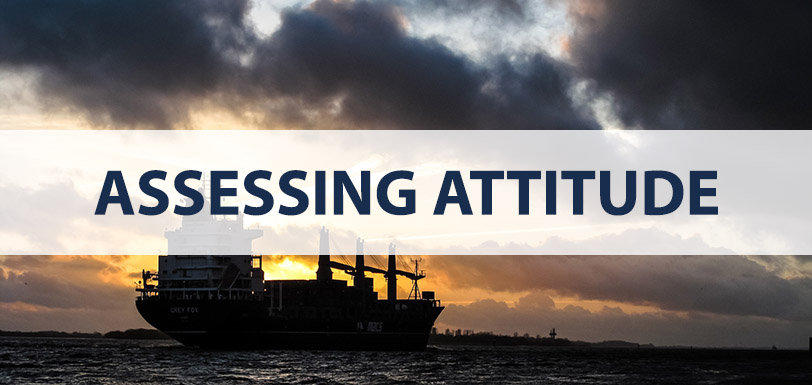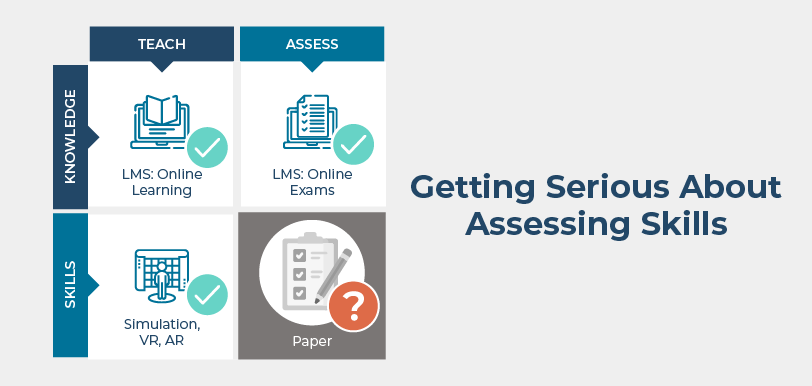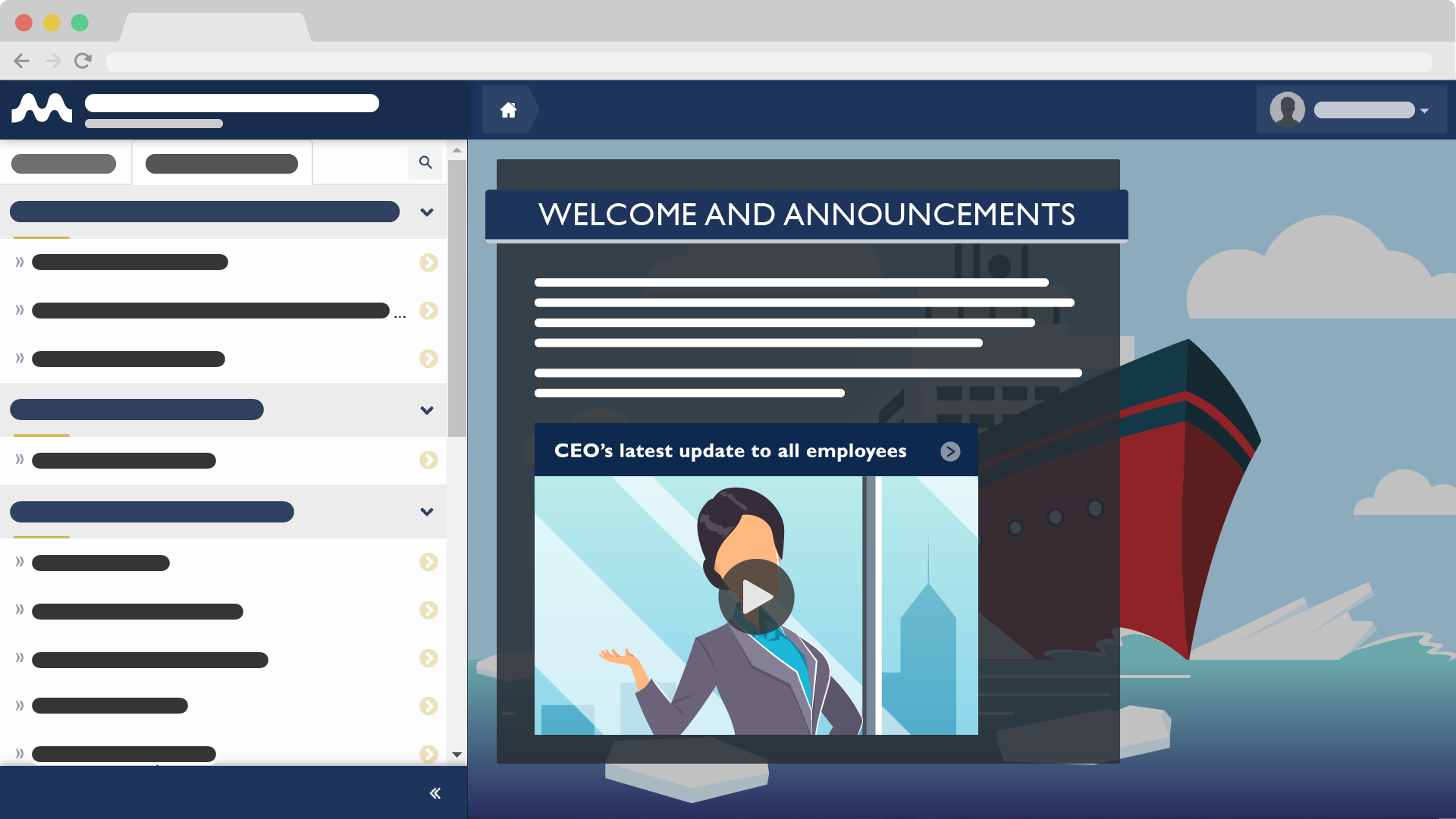Assessing Attitude: An Important, but Rarely Measured Mariner Quality
Jan 6, 2016 Murray Goldberg 1 AssessmentThe following post is part of a series of articles originally written by Murray Goldberg for Maritime Professional (found here). We have decided to re-post the entire series based on reader feedback.
Introduction
This is a continuation of a series of articles on assessment in the maritime industry, the previous article can be found here.
I was once at a maritime conference where I gave a presentation on blended learning where I met a number of people who really care about training. One of them came up to me after my presentation and expressed their belief that there is an important element of maritime performance which is rarely taught or assessed directly. He argued that this element is arguably the most important element in safe performance. What is that element? Attitude. You might call it professionalism, ethics, conscientiousness, or some other related name – but you get the idea. This is not the first time I have heard this comment.
This article will look at the importance of assessing attitude in mariners, and how to effectively do so.
The Importance of Assessing Attitude
Skills and knowledge are requirements. You can’t be safe and efficient without them. However, a mariner may have all the required skills and knowledge, but still be a very poor, unsafe mariner if his or her attitude or ethics are poor:
Does the person care about the job? Do they care about their fellow crew members or themselves?
When they see a problem, are they the type of person to stop and report it or fix it? Or do they just keep on walking?
Do they instill professionalism in others? Or do they breed a lack of professionalism, and therefore poor performance in others?
Everyone knows who among their fellow workers have poor work attitudes, and in most cases it eventually catches up with them. Even so, there is a strong argument that we should actively assess attitude – providing some measure of it. If we do so, then we can act on real data, and do so much more quickly than we otherwise might be able to.
Unprofessional attitudes can be poisonous to safety and the work environment and the more quickly we address them, the better off the organization is likely to be as a whole.
The problem is, how do you measure it?
Measuring Attitude
Many organizations (hopefully most) perform regular performance appraisals. These are typically done by a superior and will often mention attitude and professionalism – at least if an issue is perceived. This is a good start, but it is incomplete and there is more that can be done.
Psychological Testing
There is a class of psychological testing, called objective personality testing, that is designed to measure attitude. These can take the form of written tests or, more recently, a technique called “gamification” where the candidate plays a scenario-based game and is required to make decisions based on the scenarios presented. The responses are studied by behavioural theory models which try to translate the reactions into measures of attitude, teamwork, work ethic, etc. You may be rolling your eyes already at the idea that we can draw meaningful conclusions from such tests, but keep an open mind for at least a few more minutes.
These tests usually have “validity” questions built in – questions which are there only to determine whether the test taker answered truthfully. Many people feel strongly that this kind of testing is very valuable and can, more often than not, produce useful and reliable information about the candidate’s attitude. Others argue that these tests require a high level of expertise to interpret – even though they are intended to be objective.
I am not even close to being a behavioral theorist, so I hesitate to offer an opinion on this kind of testing. Having said that, I do question the reliability of this kind of testing. I can’t help but think that a semi-intelligent person would be able to adjust his or her answers to those which he or she believes are the desirable answers. After all, even if a person has no morals, they probably know what good morals look like and knows that society values them. A really well constructed test may be hard to “fake”, but impossible? I am not sure.
Even if we do consider this kind of testing relatively reliable, the test is not telling us how the attitude manifests itself in terms of performance – only that there is an attitude issue. Therefore – what do we do with the results? It may be reasonable to consider the results if we are making a hiring decision. But what about test results for an existing mariner? Would a poor test result constitute reasonable grounds for remedial training or even possibly dismissal? Possibly the former, but likely not the latter.
Instead, at least for existing employees, it may be better to directly measure the attitude’s affect on performance. We can do this using 360-degree evaluations.
360-Degree Evaluations
A 360 degree evaluation gets its name because of who performs the evaluation. Here, 360 degrees means “on all sides” of the person being evaluated.
Specifically, the candidate is evaluated by his or her superiors, reports and peers. Some may consider such an evaluation at odds with the hierarchical reporting structure of the maritime industry. We are accustomed to being evaluated by our superiors. But what about our peers and subordinates? I suspect for most of us, if we think about it, we will come to the conclusion that knowledge of how our peers and subordinates view our performance can make us better at our job. If so, read on.
A 360 evaluation can assess a variety of attributes, but they are generally geared toward subjective attributes such as attitude and professionalism. The evaluation typically is based on a series of questions that evaluators are asked about the person being evaluated. The evaluators, normally numbering between eight and twelve, are usually a combination of some suggested by the person being evaluated and some chosen by the supervisor. All must have worked with the candidate sufficiently that they are able to render a meaningful opinion. In fact, studies show that the longer the assessors know the person being evaluated, the more reliable the assessments are. Not surprising.
The questions in the assessment can be direct and to the point, as long as they are the kinds of questions that the evaluators would have a basis for answering. It should be clear to the assessors that all questions should be answered based on their direct observations when working with the person being assessed. Likewise, there should always be an opportunity to answer “insufficient knowledge to answer this question”. Finally, if possible, each question should be answered on a scale (for example: 6 – Agree completely, 5 – Somewhat Agree, 4 – Agree, 3 – Disagree, 2 – Somewhat Disagree, 1 – Disagree completely). There should also be the opportunity for the evaluator to add a comment to any answer. Finally, feedback should be provided anonymously in order to encourage honesty – especially from subordinates.
To assess attitude, you might ask questions such as:
- This person presents themselves, by their appearance and actions, professionally on the job.
- This person inspires conscientious performance in others.
- I trust this person to uphold the highest safety standards.
- This person engages in all activities with a positive attitude, enthusiasm, and a smile.
- This person always wears the required safety gear.
The examples above focus on professionalism and performance, but you can also assess leadership, teamwork, or any number of other soft skills. The only requirements are that questions must relate directly to the job and be relevant to key company objectives.
Once the evaluations have been received, the results are assembled into a report which can be used as a basis for decisions.
The task of creating the evaluations, distributing them to the evaluators, collecting the completed evaluations, and assembling the results into a report is a major effort and was a significant impediment to the use of 360 degree evaluations in the past. Now, however, technology has come to the rescue and there are many good systems which automate all the hard work.
There is a lot more to the correct design and delivery of 360 degree evaluations – this is just a start. It should be noted that although, with planning, it is easy to do a great job, it is also easy to do a bad job at creating and delivering 360 degree assessments. Doing so can cause real damage to morale that takes time to repair. But, done well, it can be not only a valuable information source to the company, but also to the individual in helping them grow in their career.
So the message is do your homework really well before embarking on this.
The Benefits of 360 Degree Assessments
360 degree assessments tend to be quite effective and useful when done well. I have had experience using them as both the subject and the evaluator. Many times in fact.
The first benefit is derived from the fact that there are many evaluators, not only one. Because of this, it is easy to identify trends in the reports and have a greater confidence as to their validity. If there is a problem, it has likely been noticed by more than one person. Similarly, these assessments are less prone to being skewed by one outlying evaluation. As long as multiple people are assessing from the same “viewpoint” (peer, superior or inferior), then we can usually discount the outliers: evaluations which are not consistent with a large majority.
Another benefit to this type of evaluation is that an employee can sometimes present themselves differently to, for example, their superiors than they do to their peers or inferiors. Therefore, these evaluations are far better at identifying one-sided issues (such as poor leadership or expressed lack of respect for authority) than in an evaluation done solely by a superior.
Finally, 360 degree evaluations also provide a candid source of feedback that the person being evaluated does not often have access to. It can be a real eye-opener to see how your work is viewed by others. If the process is constructive and done with sensitivity, this can help the person being evaluated identify issues they were not aware of – but would very much like to work on.
Follow this Blog!
Receive email notifications whenever a new maritime training article is posted. Enter your email address below:
Interested in Marine Learning Systems?
Contact us here to learn how you can upgrade your training delivery and management process to achieve superior safety and crew performance.







Bravo! Great article, especially the 360-degree evaluation! Many problems on board and a frequent reason for terminating the service of a crew member is because of attitude problem, labelled incompetence. The STCW convention should have covered a chapter about attitude. But in STCW 2010 “attitude” appeared only once. It can be found in Table A-VI/4-2 – Competence in Medical Care. Its criteria for evaluating competence: Personal attitude is calm, confident and reassuring.